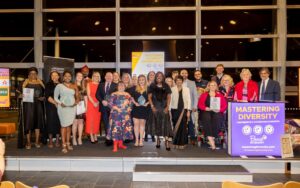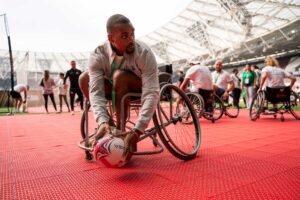How To Make Your Events More Inclusive

In today’s global society, fostering inclusivity in events is not just a courtesy; it’s a necessity. Whether you’re organising a corporate function, a community gathering, or a private celebration, inclusiveness ensures that everyone feels welcome and valued.
With help from Zentive, this comprehensive guide offers practical strategies to make your events more inclusive, ensuring they cater to a diverse range of needs and preferences.
Understanding Inclusivity
Inclusivity in event planning means creating an environment where all attendees, regardless of their background, abilities, or beliefs, feel equally welcomed and respected. This involves considering various factors such as accessibility, cultural sensitivity, and diverse representation. By doing so, you cultivate a space that not only acknowledges but celebrates diversity.
Venue Accessibility
Choosing an accessible venue is the first step towards inclusivity. Ensure that the location is wheelchair accessible, with ramps and wide doorways. Additionally, consider the needs of those with visual or hearing impairments by incorporating sign language interpreters or audio description services. Remember, accessibility isn’t just about physical barriers; it’s about creating an environment where everyone can participate fully.
Diverse Representation in Programming
Representation matters. When planning your event, ensure that speakers, entertainers, and panel members come from diverse backgrounds. This not only enriches the experience for all attendees but also reflects a commitment to celebrating diversity. Diverse programming can challenge stereotypes, foster empathy, and encourage a broader understanding of different perspectives.
Cultural Sensitivity
Being culturally sensitive is crucial in making everyone feel welcome. This includes being mindful of dietary requirements by offering a range of food options such as vegetarian, vegan, halal, or kosher meals. Additionally, consider the significance of dates and holidays for different cultures to avoid scheduling conflicts. Acknowledging and respecting cultural differences demonstrates a thoughtful approach to inclusivity.
Communication and Language
Effective communication is key. Use clear, simple language in all event materials and consider providing translations if your event attracts a multilingual audience. Additionally, provide materials in multiple formats (e.g., Braille, large print) for those with visual impairments. This inclusive communication strategy ensures that information is accessible to all.
Training Staff and Volunteers
Training staff and volunteers on inclusivity principles is essential. They should be equipped to handle diverse needs with sensitivity and respect. This training can include understanding different cultural norms, recognising unconscious biases, and learning how to provide assistance to those with disabilities. Well-trained staff and volunteers are crucial in creating a welcoming atmosphere.
Feedback and Continuous Improvement
Collecting feedback post-event is invaluable. It provides insights into what worked well and what could be improved. Encourage attendees to share their experiences and suggestions. This feedback loop allows for continuous improvement, making each event more inclusive than the last.
Inclusive Events Require Thoughtfulness & Commitment
Making your events more inclusive is an ongoing process that requires thoughtfulness, commitment, and flexibility. By considering accessibility, diverse representation, cultural sensitivity, and effective communication, you can create an environment where everyone feels valued and included. Inclusivity is not just about meeting a standard; it’s about creating a space where diversity is celebrated, and every individual feels they belong.






